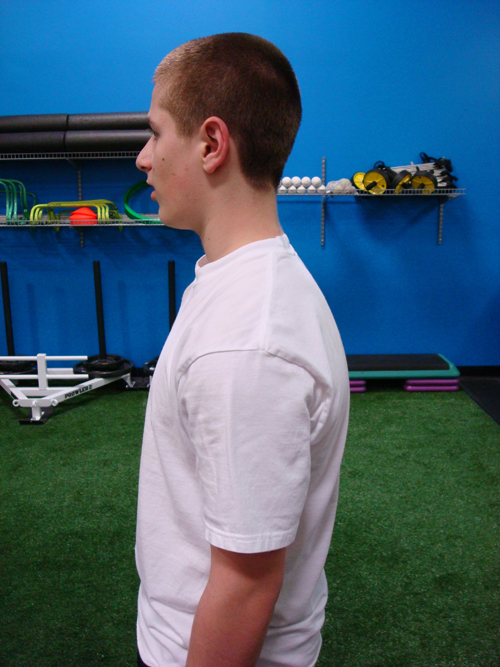Building a strong “posterior dominant” shoulder has been shown to be of great value for the overhead athlete. Based on the demands of the sport (the fact that many great overhead athletes have acquired laxity) and the construct of the joint (the shoulder joint in and of itself sacrifices large amounts of stability for mobility) this anatomical landmark plays an important role in the athletes’ protocol. However many times direct cuff strengthening is overlooked in the practical programming for the contact athlete. Is this valid or do we need to look deeper into preparing our athletes for the demands of their sport? Lets take a look at the evidence regarding shoulder injuries in contact sports.
-
Shoulder fractures (in youth populations) and dislocations occur most often in contact sports such as football and wrestling. (Pasque et al)
-
Shoulder Injuries remain the most common site of injury in hockey.
-
Injuries to the upper extremities account for more than 25% of all sports-related injuries (In young adults), but receive disproportionately less attention compared to lower extremity injuries. (Patel et al)
-
Youth athletes are more susceptible to fracture and overuse injuries from lower forces (Reinold)
-
In the youth population, glenohumeral instability is more likely than rotator cuff injuries.
-
(Simonet et al) have reported a recurrence rate of 82% after primary acute glenohumeral dislocation in athletes younger than 30.
-
In athletes involved in collision sports, the recurrence rates have been reported between 86-94%. (Wilk et al)
-
(Hovelius et al) noted patients in their 20’s exhibited a recurrence rate of 60% dislocation, patients in their 30’s-40’s less than 20%. In adolescence, the recurrence rate is as high as 92% and 100% with an open physes.
The above facts pertain to traumatic contact injuries. However, these pathologies lead to instability and a higher chance of future injury. We also need to consider posture and the fact that young contact athletes many times are hyper-mobile and can have congenital laxity. A perfect example is the athlete that is “double jointed”. These athletes can face higher potentials of injury in contact sports and many times can have weak, underworked dynamic humeral head stabilizers.

Static Posture (Rounded Shoulders)
Congenital Laxity
Positive Sulcus Sign in Left shoulder
Is Current Protocol Enough?
Let me assure you that I am not an “isolation” based Strength and Conditioning Coach. My athletes get after it with heavy weight and technical proficiency. The above athletes (U18 AAA Hockey Players) have done their fair share of Cleans, front squats, RFESS, single leg squats, trap bar deadlifts, vertical pulls, Turkish Get Ups, and every sort of horizontal pulling variation that you can think of (all performed with NO pain). I believe that a well-designed strength and conditioning program can reduce shoulder injuries for the most part by:
-
"Opening up" the subacromial space with horizontal pulling
-
Strengthen scapular depressors (lower traps) with pulling
-
Strengthen scapular upward rotators (serratus anterior) with pressing
-
GH joint approximation/compression with Get Ups
-
Gain mobility in the ankles, hips, T-Spine
However, I believe that “direct cuff” strengthening can benefit contact athletes. Athletes are known to have poor dynamic stability. In fact when looking at the physical therapy protocols for traumatic onset, congenital and acquired laxity patients, direct cuff strengthening is a part of EVERY program (both IR/ET rotation, dynamic stabilization, proprioceptive awareness and promoting cuff balance). They are isolating the cuff to enhance dynamic stability. To ignore this evidence, in my opinion, is a mistake. We are Strength Coaches, not PT’s, but our job is too keep or athletes safe and healthy. I am not suggesting that 30 athletes should spend 20 minutes doing external rotation work on the cable machine. I am however suggesting that what we’re currently doing isn’t working. Body contact is a part of many sports: hockey, rugby, football, lacrosse, and although we cannot control what happens on the field/ice, we CAN control how we prepare our athletes! Isolation work on the cuff can only aid in our quest of enhancing dynamic stability. We can build this into our program several ways:
-
Add “cuff work” prior to weight training
-
Add “cuff work” into activation
-
Add “cuff work” between lifts (ex. Press paired with external rotation)
Prevention vs. Reaction
As Coaches, we are judged on performance gains, but more importantly on the health of our athletes (games missed due to injury). Contact athletes transmit, produce and absorb force on a daily basis many times with the least stable joint in the human body. This leads to instability and pathology. Shoulder injuries remain the most common site of injury in the sport of hockey! Is our current protocol working? Can we better our product? I would much rather throw some “direct cuff” work into my program than have my athletes performing “direct cuff work” at the physical therapy clinic after an acute dislocation. We can never fully prevent contact injuries in sports, but as Coaches, we can do our best to reduce them!
References:
- Pasque, C.B., & Hewett, T.E (2000). A prospective study of high school wrestling injuries. Am J Sports Med, 28, 509-515.
- Patel, M, Upper extremity radionuclide bone imaging: shoulder, arm, elbow, and forearm, Semin Nuci Med., 1998, Jan; 28 (1): 3-13.
- Wilk, K, Reinold, M, Andrews, J, The Athlete’s Shoulder, Churchill Livingstone, 2009.
- Simonet, WT, Colfielf, RH, Prognosis in anterior dislocation, Am J Sports Med, 11084:12:19-23.
- Wilk, Reinold, Macrina, Non-Operative Rehabilitation for Traumatic Glenohumeral Instability, NAJPT, Feb. 2006, Vol. 1.
- Hovelius, L., Eriksson, K, Fredin, H, et al, Recurrence after initial dislocation of the shoulder, Results from a prospective study of treatment. J Bone Joint Surg. 1983; 65:343-349.
Anthony Donskov, MS, CSCS, PES, is a former collegiate and professional hockey player, founder of Donskov Strength and Conditioning Inc., (www.donskovsc.com) and Head Instructor/Director of Off-Ice Strength and Conditioning for Donskov Hockey Development (www.donskovhockey.com). He can be reached at info@donskovsc.com
.